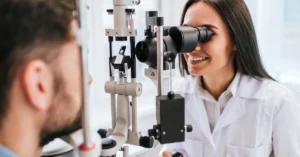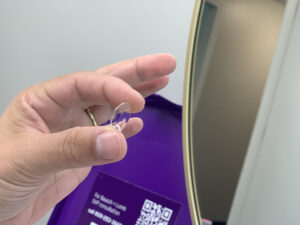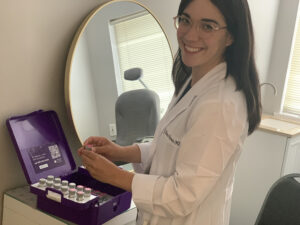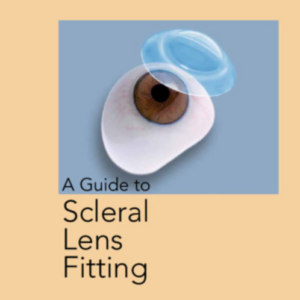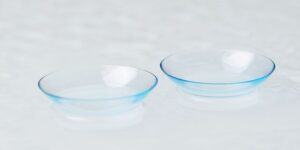Scleral Lens Plunger have emerged as a game-changing solution for individuals with specific eye conditions such as keratoconus, extreme dry eyes, and those who have undergone post RK surgery. These specialized lenses offer unique advantages over traditional contact lenses, providing improved comfort and vision correction. Let’s delve into understanding scleral contact lenses and explore their benefits.
Understanding Scleral Contact Lenses
Scleral contact lenses are larger in diameter compared to standard contact lenses. They are designed to vault over the cornea, resting on the sclera (the white part of the eye). This unique design creates a reservoir of tears between the lens and the cornea, providing a cushioning effect and improving comfort. The lens also helps to create a smooth and even refractive surface, which enhances vision clarity.
Scleral contact lenses are custom-made to ensure a precise fit for each individual’s eye shape and condition. They are typically made from highly breathable materials that allow oxygen to reach the cornea, maintaining good eye health even during extended wear. Additionally, these lenses are known for their stability on the eye, reducing the risk of dislodgement or discomfort.
Benefits of Scleral Contact Lenses
Scleral contact lenses offer several significant benefits compared to traditional contact lenses:
- Improved Vision: The unique design of scleral lenses helps to correct refractive errors, offering clearer and sharper vision. These lenses can effectively address irregularities in the cornea, such as those caused by conditions like keratoconus, and provide better visual acuity.
- Enhanced Comfort: By vaulting over the cornea and resting on the sclera, scleral lenses provide a more comfortable wearing experience. The tear reservoir between the lens and the cornea keeps the eye lubricated, reducing dryness and irritation often associated with other types of contact lenses.
- Longer Wear Time: Scleral lenses have the advantage of extended wear time. Due to their larger size and increased oxygen permeability, they can be safely worn for longer periods, providing consistent vision correction throughout the day.
- Protection and Moisture: The tear reservoir created by scleral lenses acts as a protective barrier, shielding the cornea from external irritants and pollutants. This can be particularly beneficial for individuals with sensitive or dry eyes, as the lenses help to retain moisture and prevent evaporation.
- Versatile Application: Scleral lenses are not only suitable for correcting refractive errors but can also be used to manage various eye conditions. They are often recommended for individuals with irregular corneal shapes, corneal scars, and severe dry eye syndrome.
By understanding the unique features and benefits of scleral contact lenses, individuals dealing with specific eye conditions can explore this game-changing solution to enhance their vision and improve their overall eye health. It is important to consult with an eye care professional to determine if scleral lenses are the right choice for your specific needs.
The Role of the Scleral Lens Plunger
When it comes to the proper insertion and removal of scleral contact lenses, a scleral lens plunger plays a crucial role. Let’s take a closer look at what a scleral lens plunger is and how it works.
What is a Scleral Lens Plunger?
A scleral lens plunger is a specialized tool designed to assist with the insertion and removal of scleral contact lenses. It consists of a small, suction cup-like device attached to a handle. The plunger is typically made of soft and flexible materials, ensuring a gentle and comfortable experience for the wearer.
The primary function of the scleral lens plunger is to create suction, allowing you to securely hold and handle the lens during the insertion and removal process. Its unique design helps minimize the risk of damaging the lens and provides better control and stability, especially when dealing with larger scleral lenses.
How Does a Scleral Lens Plunger Work?
Using a scleral lens plunger is a straightforward process. To insert the lens, place the suction cup of the plunger on the front surface of the lens. Gently press the plunger, creating suction between the lens and the plunger. This suction holds the lens in place and allows for controlled placement onto the eye.
When it comes to removing the lens, the plunger simplifies the process. After applying a saline solution or lubricating eye drops, position the plunger on the front surface of the lens. Again, gently press the plunger, creating suction to lift the lens off the eye. This controlled suction helps avoid any discomfort or potential damage that could occur with improper removal techniques.
Using a scleral lens plunger provides several advantages when compared to other methods of insertion and removal. It enhances precision, reduces the risk of damaging the lens, and minimizes the chance of touching the lens with your fingers, which could compromise hygiene. Additionally, a plunger ensures a more stable grip, making the process easier and more efficient.
To ensure a successful experience with a scleral lens plunger, it’s essential to follow proper technique and seek professional guidance. Your eye care practitioner can provide detailed instructions on how to use a plunger effectively and answer any questions you may have.
Now that we understand the role of a scleral lens plunger in the insertion and removal of scleral contact lenses, let’s delve into the importance of proper techniques and best practices to enhance your experience with these remarkable lenses.
The Importance of Proper Insertion and Removal
When it comes to using scleral contact lenses, proper insertion and removal techniques are crucial for a comfortable and successful experience. These lenses, designed to vault over the cornea and rest on the sclera, require careful handling to ensure optimal vision correction and eye health. In this section, we will discuss the importance of inserting and removing scleral contact lenses correctly.
Inserting Scleral Contact Lenses
Inserting scleral contact lenses requires a step-by-step process to ensure a proper fit and secure placement on the eye. Here’s a guide to help you with the insertion process:
- Cleanliness: Before handling the lenses, wash your hands thoroughly with mild soap and water to minimize the risk of contamination.
- Lens Preparation: Rinse the lenses with an appropriate saline solution or scleral lens solution to remove debris and ensure optimal lens hygiene.
- Lens Inspection: Check the lenses for any damage or deposits. If you notice any issues, consult your eye care professional for guidance.
- Positioning: Hold the lens on your dominant hand’s index finger, ensuring the concave side of the lens is facing up.
- Stabilization: Use your non-dominant hand to hold your eyelids open and keep your eye steady.
- Application: Gently place the lens onto your eye, making sure it is centered and aligned properly.
- Blinking: Blink several times to allow the lens to settle into position. If necessary, you can use a scleral lens plunger for assistance.
Remember, it may take some practice to become comfortable with the insertion process. If you’re experiencing difficulty or discomfort, don’t hesitate to seek guidance from your eye care professional.
Removing Scleral Contact Lenses
Proper removal of scleral contact lenses is just as important as insertion to prevent damage and ensure eye health. Follow these steps for safe and effective lens removal:
- Wash Hands: Begin by thoroughly washing your hands with mild soap and water.
- Stabilize the Eye: Use your non-dominant hand to hold your eyelids open, keeping your eye steady.
- Suction Technique: Gently press the edge of the lens with your dominant hand’s index finger to break the seal. Create suction by tilting the lens slightly and pulling it away from your eye.
- Remove the Lens: Once the suction is released, slide the lens downward and off your eye. Be careful not to squeeze or pinch the lens excessively.
- Lens Inspection: After removal, carefully inspect the lens for any damage or deposits. Clean and store the lens as recommended by your eye care professional or the lens manufacturer.
Proper insertion and removal techniques play a crucial role in maintaining the comfort and effectiveness of scleral contact lenses. It’s important to follow these steps diligently and seek guidance from your eye care professional if you encounter any issues or have concerns.
In the next section, we will explore the advantages of using a scleral lens plunger for easier handling and improved hygiene.
Advantages of Using a Scleral Lens Plunger
When it comes to handling and caring for scleral contact lenses, a scleral lens plunger can be a game-changer. This handy tool offers several advantages that make the insertion and removal of scleral lenses much easier and more efficient. Let’s explore the benefits of using a scleral lens plunger:
Easier Handling
Inserting and removing scleral contact lenses can be a delicate and challenging process. However, a scleral lens plunger simplifies this procedure by providing a convenient way to handle the lenses. The plunger is designed with a suction cup-like tip that securely attaches to the front surface of the lens, allowing for precise control and manipulation.
By using a scleral lens plunger, patients can avoid direct contact with the lens surface, reducing the risk of touching or damaging the lens. This ease of handling is especially beneficial for individuals with conditions like keratoconus, extreme dry eyes, or those who have undergone post-RK surgery, as they may require extra care when handling their lenses.
Reduced Risk of Damage
One of the primary concerns when handling scleral lenses is the potential for damage. These lenses are delicate and need to be handled with care. The suction cup-like tip of a scleral lens plunger enables gentle and controlled handling, minimizing the risk of accidentally dropping or mishandling the lenses.
Since a scleral lens plunger provides a secure grip on the lens, it reduces the likelihood of the lens slipping or falling out of the patient’s fingers during insertion or removal. This helps to protect the lens from potential damage, ensuring its longevity and optimal performance.
Improved Hygiene
Maintaining proper hygiene is crucial when wearing contact lenses to avoid potential eye infections or complications. A scleral lens plunger promotes better hygiene by reducing the need for direct contact with the lens. This minimizes the transfer of dirt, oils, or bacteria from the hands to the lens surface.
Additionally, using a plunger can help prevent fogging on the lens during insertion. By eliminating the need to touch the lens with bare fingers, the risk of moisture or oils being transferred is reduced, resulting in a clearer and more comfortable lens-wearing experience.
In summary, a scleral lens plunger offers several advantages for individuals wearing scleral contact lenses. It facilitates easier handling, reduces the risk of lens damage, and promotes improved hygiene. By incorporating a scleral lens plunger into your lens care routine, you can enhance your experience and maintain the longevity of your lenses. To learn more about scleral lenses and other related topics, browse our articles on scleral contact lens, scleral lens solution, and scleral lens fitting.
Tips and Best Practices for Using a Scleral Lens Plunger
To ensure a smooth and successful experience with your scleral lens plunger, it’s important to follow some essential tips and best practices. By incorporating these practices into your routine, you can optimize the cleaning, insertion, and removal process of your scleral contact lenses.
Cleaning and Maintenance
Proper cleaning and maintenance of your scleral lens plunger is crucial to maintain its hygiene and functionality. Here are some tips to keep in mind:
- Washing: Regularly wash the plunger with a mild, non-abrasive soap and warm water. Thoroughly rinse off any soap residue afterward.
- Drying: Allow the plunger to air dry completely before storing it. Avoid using towels or tissues that may leave lint or residue on the plunger.
- Storage: Store the plunger in a clean and dry container to protect it from dust and contaminants. Avoid storing it near any chemicals or harsh substances that may damage the plunger.
- Replacement: Replace the plunger as recommended by your eye care professional or manufacturer. Over time, the plunger may wear out, affecting its performance and hygiene.
Proper Technique for Insertion and Removal
Mastering the proper technique for inserting and removing your scleral contact lenses with the plunger is essential for comfort and safety. Here are some guidelines to follow:
- Clean Hands: Wash your hands thoroughly with soap and water before handling your lenses. This helps prevent the transfer of dirt, oils, and bacteria onto the lenses.
- Positioning: Hold the plunger with your dominant hand and ensure it is clean and dry. Gently place the suction cup of the plunger onto the center of the lens.
- Suction: Apply gentle pressure to create suction between the plunger and the lens. Make sure the lens is securely attached to the plunger before removal or insertion.
- Insertion: To insert the lens, tilt your head back slightly, hold your eyelids open with your non-dominant hand, and carefully position the lens onto your eye. Release the suction by gently pressing the plunger.
- Removal: To remove the lens, use the plunger to create suction on the lens. Gently pull the lens straight out of your eye. Avoid any sudden movements or excessive force that may cause discomfort or damage.
Seeking Professional Guidance
While these tips can enhance your experience with a scleral lens plunger, it’s essential to seek professional guidance from your eye care practitioner. They can provide specific instructions tailored to your needs and ensure you are using the plunger correctly.
Your eye care professional can also guide you on other important aspects of scleral lens care, such as scleral lens solution, scleral lens insertion, and scleral lens cleaning. Regular check-ups and consultations with your eye care professional are essential for the ongoing care and maintenance of your scleral lenses.
By following these tips and seeking professional guidance, you can optimize your experience with a scleral lens plunger and enjoy the benefits of comfortable and clear vision.

